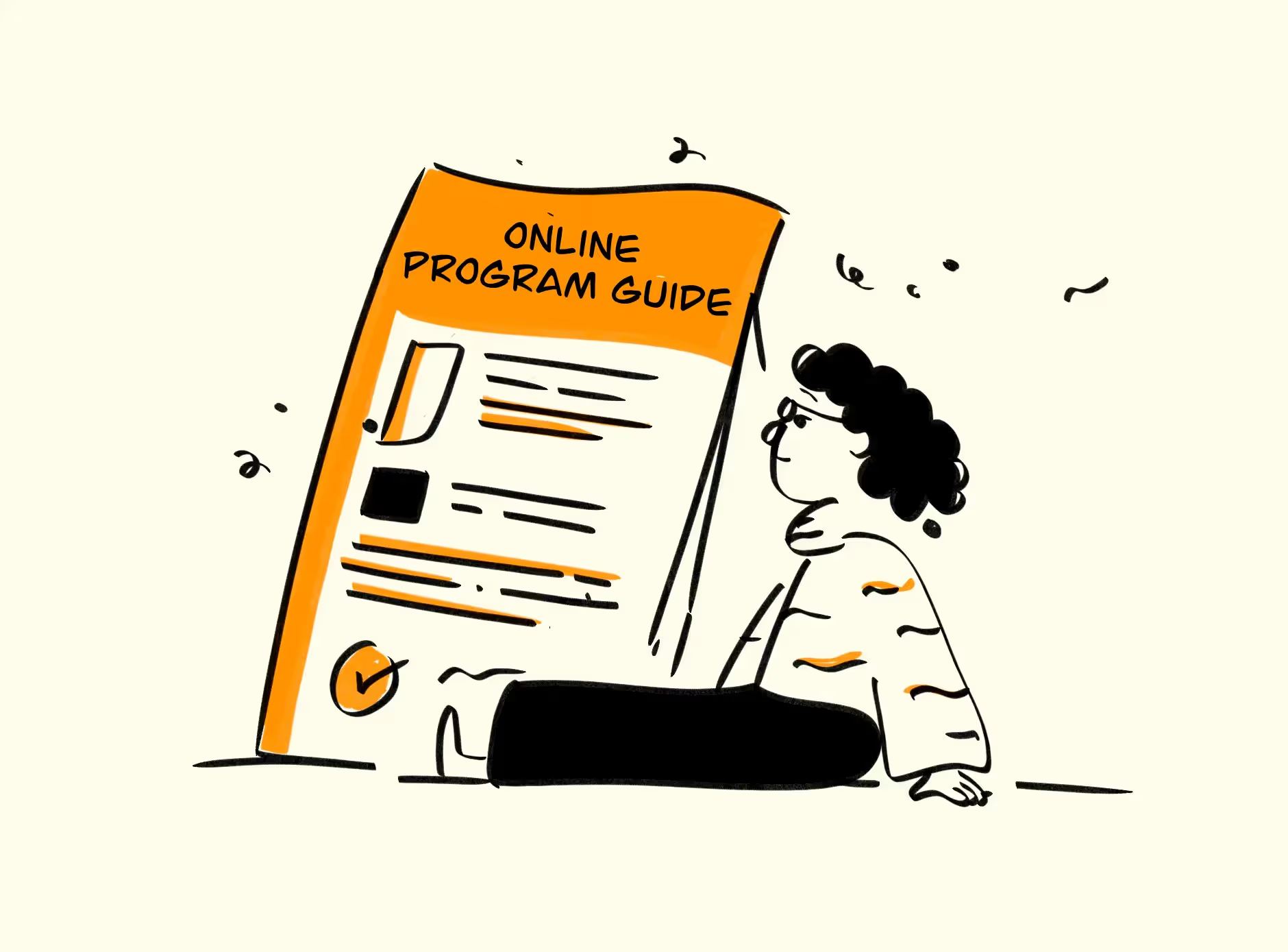




Key Takeaways
- Overcoming challenges like security concerns, visibility, and payment collection is achievable with the right resources and planning.
- Engagement and interaction tools, such as live polls and real-time chats, foster a connected and productive learning environment.
- Platforms like EdisonOS simplify teaching processes, from maintaining student engagement to ensuring data security, enabling educators to focus on delivering quality education.
Online teaching has revolutionized education, making it accessible and flexible for learners worldwide. However, the transition to virtual classrooms has also brought a set of unique challenges for educators.
From maintaining student engagement to managing technical issues, teaching online requires innovative strategies and tools to create an effective learning environment.
In this blog, we will explore the common challenges of teaching online and actionable solutions, including how tools like Edison can help you foster more engaged and happy students.
Challenges in Online Teaching & How to Solve Them
Let’s dive into the primary difficulties of online teaching and discuss practical solutions to overcome them.
1. Staying Engaged Throughout the Lesson
One of the most critical challenges in online teaching is ensuring students remain engaged. In traditional classrooms, the teacher’s physical presence can foster focus, and in-person activities can engage students better. Virtual classrooms often struggle to hold students’ attention. Distractions at home, lack of real-time feedback, and the absence of peer interaction can lead to disinterest and reduced participation.
How to Solve It
- Interactive Tools and Features: Using platforms like EdisonOS, with built-in interactive tools, such as live quizzes, polls, and real-time Q&A sessions, breakout rooms, and multimedia integration, can enhance engagement.
- Clear Lesson Structure: Plan lessons with clear objectives, incorporating visuals, videos, and hands-on activities. Breaking the session into shorter, digestible segments can also prevent fatigue.
- Use Personalization: Platforms like EdisonOS help teachers personalize lessons by observing how students interact with content. For example, if a student spends more time on text-based materials than video lectures, the platform might prioritize written resources for that student. By analyzing participation data, such as quiz attempts or time spent on various activities, it adjusts the learning experience to match individual preferences effectively.
2. Dealing with Technical Issues Presented by LMSes & Online Teaching Platforms
Technical issues, including internet connectivity problems, incompatible devices, and software glitches, are common hurdles in online teaching. These can disrupt the flow of lessons, delay progress, and frustrate both teachers and students.
How to solve it
- Inform students of technological prerequisites: Teachers should share system requirements and troubleshooting tips with students beforehand. Conducting a quick tech-check before each class can save valuable time during the session.
- Platform Reliability: Opt for teaching platforms like EdisonOS, which offer cross-device compatibility and function well even in low bandwidth environments.
Hear from our users:

Learn More: See how My2tor used EdisonOS to replicate test environments and enhance student performance.
- Train educators to master online learning tools: Teachers should familiarize themselves with the tools they’re using. EdisonOS provides easy-to-understand tutorials and customer support, ensuring smooth lesson delivery.
3. Security and Privacy Issues
With online teaching, security concerns such as content duplication, unauthorised distribution, and breaches of intellectual property are prevalent. This can affect both the educator’s credibility and the institution’s revenue. For instance, In June 2024, LAUSD's Snowflake account was breached by "UNC5537," exposing sensitive student and staff data. The breach, linked to weak authentication, led to stolen data being sold online. Authorities are investigating.
How to Solve It
- Use DRM Tools: Digital Rights Management (DRM) tools can help safeguard content from unauthorized use. For example, Edison includes secure content sharing features that allow educators to control access.
- Incorporate Copyright Notices: Adding visible copyright notices to presentations and videos discourages unauthorized sharing.
- Platform Security features: Select platforms with robust security protocols, such as encrypted logins and data protection policies, to protect both educators and students.
4. Little or No Personal Interaction
Virtual classrooms often lack the warmth of face-to-face interactions, leading to a disconnect between students and teachers. This can make it difficult to establish trust, provide personalized feedback, and identify struggling learners.
How to Solve It
- Encourage Regular Interaction: Schedule live Q&A sessions and encourage students to use cameras during lessons. Features like real-time chat in Edison foster active discussions.
- Build rapport: Use icebreakers and informal check-ins to create a comfortable learning environment.
- Leverage Analytics: Edison’s student analytics dashboard helps identify disengaged students, enabling teachers to provide timely support.
5. Managing Visibility & Credibility
Standing out in the crowded online education space is a significant challenge. Many educators struggle with gaining visibility and establishing credibility for their courses.
How to Solve It
- Showcase Your Expertise: Offer free introductory lessons or workshops to build trust. Use testimonials and success stories from past students.
- Create Value-Driven Content: Focus on creating courses with well-researched, practical content. Edison’s course-building tools make it easy to design high-quality, engaging materials
. - Strategic Marketing: Use email campaigns, social media, and targeted ads to reach your audience.
6. Payment Collection Challenges
Payment collection can sometimes be awkward or inefficient, especially when dealing with non-automated systems or late payments.
How to Solve It
- Automated Payment Systems: Platforms like Edison simplify payment collection by integrating automated fee collection features into the enrollment process.
- Clear Policies: Establish clear payment deadlines and policies at the beginning of the course.
7. Figuring Out What to Teach
Determining the right topics to teach and how to teach them effectively can be overwhelming, especially for new educators.
How to Solve It
- Analyze Market Demand: Conduct surveys or research to identify popular subjects. Edison provides tools to track audience preferences and align courses with their needs.
- Seek Feedback: Ask students for input on what they want to learn.
8. Maintaining a Consistent Schedule
Without the structure of a traditional school day, both teachers and students may struggle with consistency and time management in online settings.
How to Solve It
- Create a Routine: Stick to a set teaching schedule to establish a sense of normalcy.
- Time Management Tools: Use scheduling tools or features like Edison’s calendar integration to organize lessons and send reminders.
Conclusion
Teaching online might be challenging for many reasons, but if you have a positive attitude and are willing to try new things, you can thrive from home. There are many reasons to teach online that have nothing to do with direct compensation, but some challenges will invariably arise when trying to teach online.
The most important takeaway from this list is that these challenges vary from a good teacher to a bad teacher and a good teacher to an average teacher. A great online teacher will consider these challenges and how they apply personally before beginning their class. It is pretty clear that even though online courses have their challenges & shortcomings, these can be overcome with proper planning & effective use of technology.
FAQs
What are the biggest challenges in online teaching?
Some common challenges include technical issues, maintaining engagement, security concerns, and managing visibility for courses.
How can teachers keep students engaged in virtual classrooms?
By using interactive tools, maintaining clear communication, and incorporating personalized learning strategies.
How can security issues be addressed in online teaching?
Use DRM tools, add copyright notices, and choose secure platforms like Edison for hosting content.
Tutors Edge by EdisonOS
in our newsletter, curated to help tutors stay ahead!
Tutors Edge by EdisonOS
Get Exclusive test insights and updates in our newsletter, curated to help tutors stay ahead!
Recommended Reads
Recommended Podcasts











.png)
.webp)
